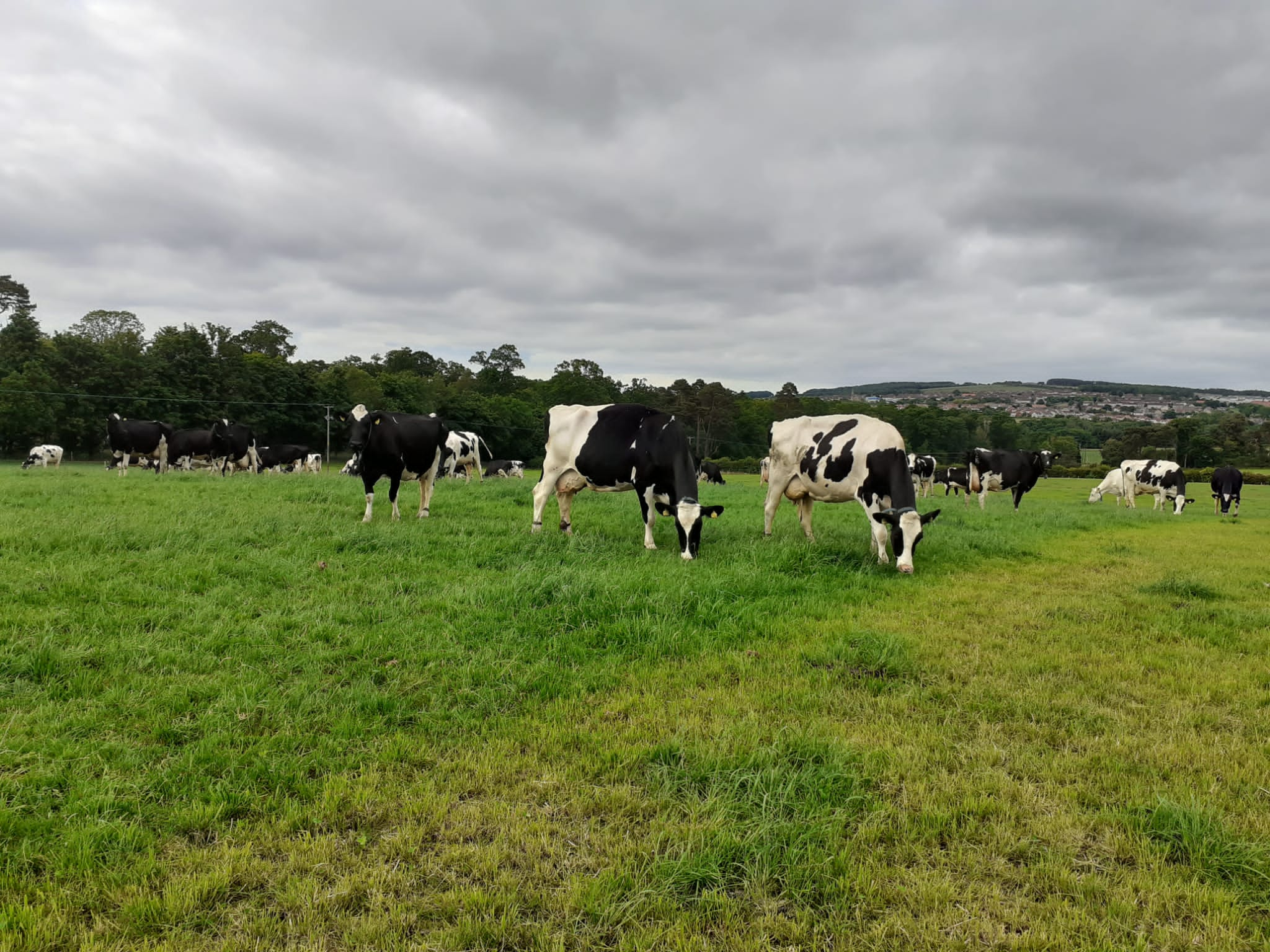- Home
- Knowledge library
- Meet Forage for Knowledge contributor Jill Bathgate
Meet Forage for Knowledge contributor Jill Bathgate
Jill Bathgate’s herd is transitioning into a grazing herd, while she is steadily increasing her grazing knowledge and gaining confidence in the value of grazed grass.
The business
Jill Bathgate and her father, Andrew, farm in partnership at Castleton Farm on the Arniston Estate near Gorebridge, about 12 miles south of Edinburgh, with two full-time members of staff. The farm has 200 breeding ewes, 90 beef cattle finished/year, plus cereals and beans in rotation with five-year grass leys on 260ha across two units.
The farm
Altitude: 200m
Annual rainfall: 1,004mm
Soils: sandy clay loam
80ha grass in rotation with arable – grazing platform is the 36ha around the dairy
20ha permanent pasture
Topography: relatively undulating, historically open cast leading to the occasional sink hole.
The cows
160 Holstein Friesians plus 20 crossbreds calving AYR, plus 40 heifers. Sexed semen to increase replacement numbers. Genetics selected for smaller, healthier cows and constituents. Cow size has now dropped from 750kg to 550kg.
Herd was housed, TMR fed and producing 11,000 litres. Now focusing on easier care and milk from forage. Yields just under 9,000 litres at 4.2% fat and 3.3% protein on a liquid contract; concentrates – 2.75t/cow/year, aiming for 2.5t/cow/year.
Why rotational grazing?
“I want an easier life for myself and the staff, with healthier cows that look after themselves. The hardest thing in changing though, is seeing the milk ticket go down. I’m totally committed to grass, lowered inputs and outputs and, although we haven’t yet got grazing, genetics, fertility and health have never been better,” says Jill.
“I could see the potential. At the time I had to get every last ounce out of the farm, but with rotational grazing I could see that we would utilise more grass and waste less and I wanted to get more out of the farm without more resources.”
Jill is also building the arable rotation around the grassland aiming to become self-sufficient in home-grown feed.
How much can you grow?
“8tDM/ha is the average and my best field produces 12– 13tDM/ha. My target is 12tDM/ha. I want to be resilient to drought and am looking at Festulolium, herbal leys, clover and reducing fertiliser.”
Challenges on a mixed farm?
Fields are roughly 10ha and have been split into three. Because of the arable enterprise, it’s been difficult to set up permanent grazing infrastructure. Jill has temporary electric fencing, although two main tracks from the dairy are made from hardcore and topped with Astroturf.
“Our troughs are in the middle of paddocks with alkathene pipe on the surface, so they can be picked up and moved. Every year, we have got better at splitting fields and allocation; bought more troughs or more reels, or proper kit,” she adds.
When do you turn out?
“Traditionally it was Easter, and inside by the end of September. Now the earliest turnout is the beginning of March and last year we were out till the end of November! We have been able to extend grazing into autumn because of the tracks and the biggest help in spring is closing off fields earlier, so that grass is there for the cows when they go out.
“I’ve now got confidence to turn out in wet weather and accept a degree of poaching, knowing it will be recovered in the next 3–4 weeks. I also know that although we have a dry spell now, the rain will come back and we will get grass. But it’s one of the hardest things I’ve ever done: feeding TMR is a doddle!
Things still to work on?
Learning to manage seedheads in paddocks; switching from autumn to spring reseeding as swards tend to be too open. Jill also has an annual meadow grass problem.
“Grass quality used to be 11 ME and now my aim is to get a consistent 12 ME throughout the season. Proteins are disappointing and still a work in progress. This year I’d also like 4,000 litres from forage; we are just above 3,500 litres. Cows have grazed and milked exceptionally well this year – until early June when it dried up.”
 Jill Bathgate
Jill Bathgate

